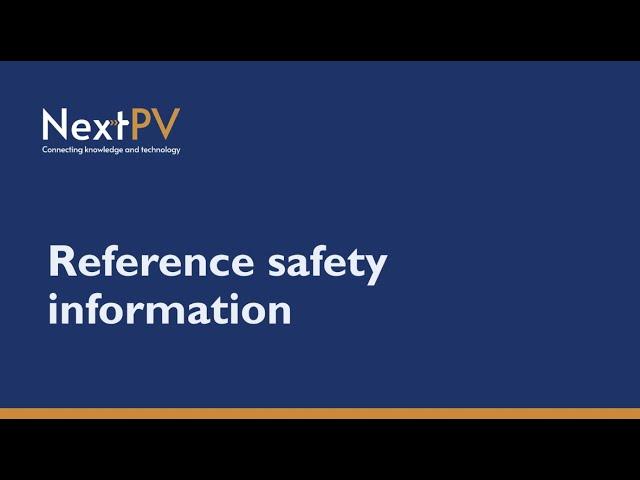
BASIC Training: Reference Safety Information
🔎 Introduction to Reference Safety Information (RSI) in Pharmacovigilance
Reference Safety Information (RSI) is a critical element in pharmacovigilance, serving as the benchmark for identifying and evaluating the safety profile of a medicinal product. RSI ensures that adverse reactions are appropriately monitored and reported, maintaining the safety and efficacy of the product throughout its lifecycle.
Key Aspects of RSI in Pharmacovigilance
🔎 Definition and Objectives:
RSI is a document that provides detailed information about the known safety profile of a medicinal product. Its primary objective is to serve as a reference point for identifying adverse drug reactions (ADRs) and assessing the benefit-risk balance of the product. RSI is essential for regulatory reporting and clinical trial management.
🔎 Core Components:
Safety Profile: Includes detailed descriptions of known adverse reactions, their frequency, and severity.
Contraindications and Warnings: Lists conditions under which the product should not be used and specific warnings related to its use.
Interactions: Details potential interactions with other medications, foods, or conditions that could affect the product’s safety.
Dosage and Administration: Provides information on recommended dosages and administration methods to minimize risks.
🔎 Processes and Procedures:
RSI is used to compare reported adverse events during clinical trials or post-marketing surveillance against the established safety profile. Specific procedures are in place to update RSI regularly based on new safety data, ensuring it reflects the most current information. This involves systematic collection, evaluation, and integration of safety data from various sources.
🔎 Regulatory Requirements:
The development and maintenance of RSI must comply with regulatory guidelines, such as those from the European Medicines Agency (EMA) and the International Council for Harmonisation (ICH). Compliance ensures that RSI meets the necessary standards for safety reporting and risk management.
🔎 Audits and Inspections:
Regular audits and inspections of the RSI processes are required to ensure accuracy and compliance. These audits help identify discrepancies or areas for improvement, ensuring the integrity of the safety information provided.
🔎 Documentation and Record Management:
Proper documentation and record-keeping are vital for RSI. This includes maintaining up-to-date records of all safety data, changes to the RSI, audit results, and communications with regulatory authorities. Accurate documentation supports transparency, regulatory compliance, and effective pharmacovigilance.
Implementing and maintaining robust Reference Safety Information is essential for ensuring the continuous monitoring and management of the safety profile of medicinal products, thereby protecting patient health and ensuring regulatory compliance.
Reference Safety Information (RSI) is a critical element in pharmacovigilance, serving as the benchmark for identifying and evaluating the safety profile of a medicinal product. RSI ensures that adverse reactions are appropriately monitored and reported, maintaining the safety and efficacy of the product throughout its lifecycle.
Key Aspects of RSI in Pharmacovigilance
🔎 Definition and Objectives:
RSI is a document that provides detailed information about the known safety profile of a medicinal product. Its primary objective is to serve as a reference point for identifying adverse drug reactions (ADRs) and assessing the benefit-risk balance of the product. RSI is essential for regulatory reporting and clinical trial management.
🔎 Core Components:
Safety Profile: Includes detailed descriptions of known adverse reactions, their frequency, and severity.
Contraindications and Warnings: Lists conditions under which the product should not be used and specific warnings related to its use.
Interactions: Details potential interactions with other medications, foods, or conditions that could affect the product’s safety.
Dosage and Administration: Provides information on recommended dosages and administration methods to minimize risks.
🔎 Processes and Procedures:
RSI is used to compare reported adverse events during clinical trials or post-marketing surveillance against the established safety profile. Specific procedures are in place to update RSI regularly based on new safety data, ensuring it reflects the most current information. This involves systematic collection, evaluation, and integration of safety data from various sources.
🔎 Regulatory Requirements:
The development and maintenance of RSI must comply with regulatory guidelines, such as those from the European Medicines Agency (EMA) and the International Council for Harmonisation (ICH). Compliance ensures that RSI meets the necessary standards for safety reporting and risk management.
🔎 Audits and Inspections:
Regular audits and inspections of the RSI processes are required to ensure accuracy and compliance. These audits help identify discrepancies or areas for improvement, ensuring the integrity of the safety information provided.
🔎 Documentation and Record Management:
Proper documentation and record-keeping are vital for RSI. This includes maintaining up-to-date records of all safety data, changes to the RSI, audit results, and communications with regulatory authorities. Accurate documentation supports transparency, regulatory compliance, and effective pharmacovigilance.
Implementing and maintaining robust Reference Safety Information is essential for ensuring the continuous monitoring and management of the safety profile of medicinal products, thereby protecting patient health and ensuring regulatory compliance.
Комментарии:
Discover Tirana, Walking Through Hidden Local Street in 4K HDR | 4K Albania Walking Tour 60fps
Footprint of Global Travel 🌏
همستر کمبت | کومبو - 29 خرداد - | hamster kombat dayli combo | 18 june
Hamster Kombat Learning | آموزش همستر کمبت
MCA Live Carrom : Prashant More (Mumbai) vs Mohd. Ghufran (Mumbai) SF-1| Rapido Carrom
Maharashtra Carrom Association
Mwanaspoti Marvell Simiyu aaga dunia
NTV Kenya
300 Pound GIANT Camera Lot Unboxing - Box 4 & 5!
Prickly Pear Camera
Oli Genn-Bash Connects #1 - Robert Forte
Oli Genn-Bash Connects
【爱豆行为大赏】端水大师谭松韵上线!张新成 宋威龙实力“宠妹”!【芒果TV爱豆娱乐站】
芒果TV爱豆 MangoTV Idol
قصة نجاح مداهم من اول مابداء
الصفحة الرسمية مداهم 777


























